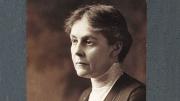Diane Paulus took a risk six years ago when she reimagined A Midsummer Night’s Dream as a 1970s disco club filled with roller-skating forest gods and dancing burlesque divas. But off-Broadway audiences whooped and danced in the aisles—The Donkey Show was a hit.
Paulus looks to be just as daring with her newest production, an adaptation of Porgy and Bess. The Boston Globe reports that the artistic director of the American Repertory Theater has turned George Gershwin’s traditional opera into an all-out musical, adding additional dialogue and scenes, trimming other scenes, and giving the 1935 tale a new ending. The show debuts on August 17 in Cambridge for a six-week run; Paulus will then take it to the Richard Rodgers Theater on Broadway, where it opens in January. The cast includes four-time Tony Award-winner Audra McDonald (Ragtime, Marie Christine, Master Class) as Bess, and Norm Lewis (The Little Mermaid, Les Miserables, Chicago) as Porgy.
Among the harshest critics of the production is acclaimed composer Stephen Sondheim, who, after reading Patrick Healy’s New York Times article, wrote a scathing letter to the editor calling the revival “dismaying on many levels.”
“Ms. Paulus says that in the opera you don’t get to know the characters as people. Putting it kindly, that’s willful ignorance. These characters are as vivid as any ever created for the musical theater, as has been proved over and over in productions that may have cut some dialogue and musical passages but didn’t rewrite and distort them….She fails to recognize that Porgy, Bess, Crown, Sportin’ Life, and the rest are archetypes and intended to be larger than life and that filling in ‘realistic’ details is likely to reduce them to line drawings.”
Set in Charleston, South Carolina, in the 1930s, the musical tells the story of the beautiful and troubled Bess, who turns to Porgy, a crippled beggar, in search of safety after her possessive lover commits murder. But as Porgy and Bess’s love for each other grows, their future becomes threatened.
Gershwin’s tale, although an American classic, has often been perceived as a racist work because of stereotypical presentations of blacks in the American South. Paulus’s version is intended to rid the story of that blemish, having been reshaped for modern audiences by Pulitzer Prize-winning playwright Suzan-Lori Parks and Obie Award-winning composer Diedre Murray, both of whom are African American.
“I feel this work more than anything is a romance, and so I wanted to flesh out the two main characters so they are not cardboard cut-out characters,” Parks told the New York Times. “I think that’s what George Gershwin wanted, and if he had lived longer—he would have gone back to the story of ‘Porgy and Bess’ and made changes, including to the ending.”







